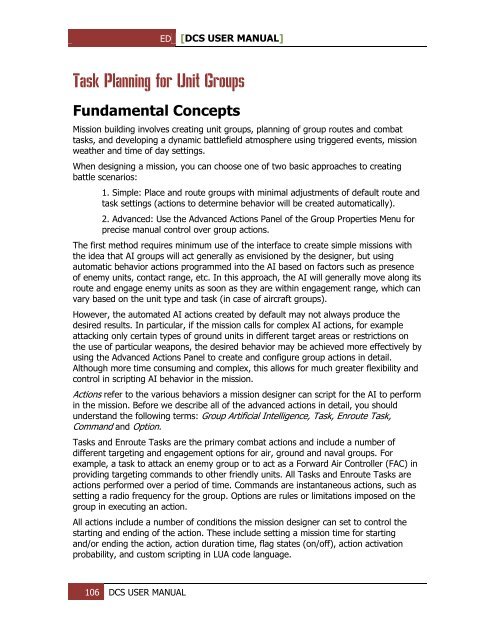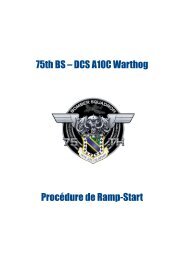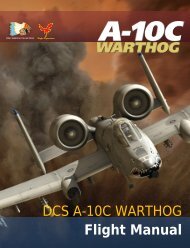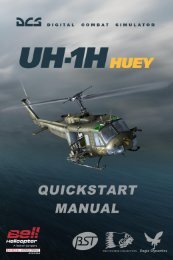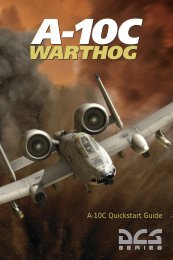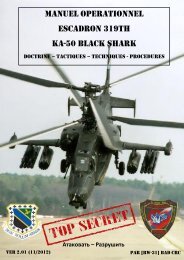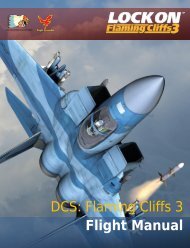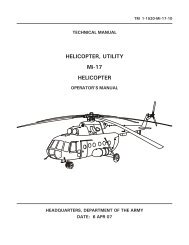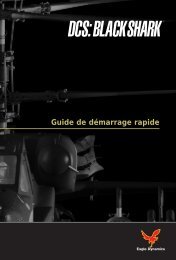You also want an ePaper? Increase the reach of your titles
YUMPU automatically turns print PDFs into web optimized ePapers that Google loves.
ED [<strong>DCS</strong> USER MANUAL]<br />
Task Planning for Unit Groups<br />
Fundamental Concepts<br />
Mission building involves creating unit groups, planning of group routes and combat<br />
tasks, and developing a dynamic battlefield atmosphere using triggered events, mission<br />
weather and time of day settings.<br />
When designing a mission, you can choose one of two basic approaches to creating<br />
battle scenarios:<br />
1. Simple: Place and route groups with minimal adjustments of default route and<br />
task settings (actions to determine behavior will be created automatically).<br />
2. Advanced: Use the Advanced Actions Panel of the Group Properties Menu for<br />
precise manual control over group actions.<br />
The first method requires minimum use of the interface to create simple missions with<br />
the idea that AI groups will act generally as envisioned by the designer, but using<br />
automatic behavior actions programmed into the AI based on factors such as presence<br />
of enemy units, contact range, etc. In this approach, the AI will generally move along its<br />
route and engage enemy units as soon as they are within engagement range, which can<br />
vary based on the unit type and task (in case of aircraft groups).<br />
However, the automated AI actions created by default may not always produce the<br />
desired results. In particular, if the mission calls for complex AI actions, for example<br />
attacking only certain types of ground units in different target areas or restrictions on<br />
the use of particular weapons, the desired behavior may be achieved more effectively by<br />
using the Advanced Actions Panel to create and configure group actions in detail.<br />
Although more time consuming and complex, this allows for much greater flexibility and<br />
control in scripting AI behavior in the mission.<br />
Actions refer to the various behaviors a mission designer can script for the AI to perform<br />
in the mission. Before we describe all of the advanced actions in detail, you should<br />
understand the following terms: Group Artificial Intelligence, Task, Enroute Task,<br />
Command and Option.<br />
Tasks and Enroute Tasks are the primary combat actions and include a number of<br />
different targeting and engagement options for air, ground and naval groups. For<br />
example, a task to attack an enemy group or to act as a Forward Air Controller (FAC) in<br />
providing targeting commands to other friendly units. All Tasks and Enroute Tasks are<br />
actions performed over a period of time. Commands are instantaneous actions, such as<br />
setting a radio frequency for the group. Options are rules or limitations imposed on the<br />
group in executing an action.<br />
All actions include a number of conditions the mission designer can set to control the<br />
starting and ending of the action. These include setting a mission time for starting<br />
and/or ending the action, action duration time, flag states (on/off), action activation<br />
probability, and custom scripting in LUA code language.<br />
106 <strong>DCS</strong> USER MANUAL


